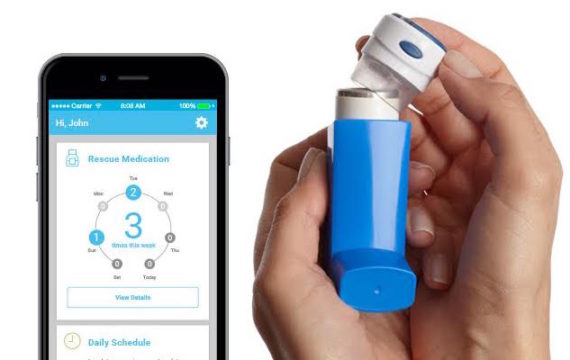Some types of viral infections can also trigger asthma. Two of the most likely culprits are respiratory syncytial virus (RSV) and parainfluenza virus.
Tobacco smoke is also a risk factor for asthma in children and a common trigger of asthma for all ages. People with asthma should not only smoke, but should also avoid the smoke from others’ cigarettes.
This “passive smoking” can trigger asthma symptoms in people with the disease.
Other irritants in the environment can also bring on an asthma attack.
These irritants may include paint fumes, smog, aerosol sprays and even perfume.
Exertion—especially in cold air—is a frequent asthma trigger. A form of asthma called exercise-induced asthma is triggered by physical exertion. Symptoms of this kind of asthma may not appear until several minutes of sustained exertion.
The kind of physical activities that can bring on asthma symptoms include not only exercise but also laughing, crying, holding one’s breath and hyperventilating (rapid, shallow breathing).
Cold air, wind, rain and sudden changes in the weather can sometimes bring on an asthma attack.
Common symptoms of asthma include the following:
- Wheezing is a high-pitched, whistling sound made during an asthma attack. Not all people who wheeze have asthma, and not all those who have asthma wheeze.
In fact, if asthma is really severe, there may not be enough movement of air through a person’s airways to produce this sound.
- Chronic cough, especially at night and after exercise or exposure to cold air, can be a symptom of asthma.
- Shortness of breath, especially during exercise, is another possible sign. All of us get out of breath when running and jumping, but most resume normal breathing very quickly afterwards.
People with asthma do not resume normal breathing during an attack.
- Tightness in the chest is a symptom that older children and adults can describe. Others may just have an uncomfortable feeling in the chest.
In mild cases of asthma, the symptoms usually subside on their own. Most people with asthma, however, will need medication to control or prevent the episodes.
The need for medication is based on how often asthma attacks occur and how severe the attacks are. With the treatments available today, most people with asthma can do almost everything that people without the disease can do.
Because each case of asthma is different, treatment needs to be tailored for each person. One general rule that does apply, though, is removing known triggers from the environment.
When possible, keeping down levels of dust mites, mould, animal dander and cockroach debris in the house especially in the bedroom.
New guidelines from the National Institutes of Health advise treating asthma with a “stepwise” approach. This means using the lowest dose of medication that is effective and “stepping up” the dose and the frequency with which it is taken if asthma gets worse.
When asthma gets under control, the medicines are then reduced – “stepped down.”
Asthma medications may be either inhaled or in pill form. These medications are divided into two types—quick-relief and long-term control.
The first group (quick-relief) is used to relieve the immediate symptoms of an asthma attack. The second group (long-term control) does not provide relief right away, but over time these medications help to lessen the frequency and severity of attacks.
Quick-relief medications include inhaled bronchodilators and inhaled steroids. They begin to work within minutes after they are used, and their effects may last for up to six hours.
However the most important treatment modality is educating people about the condition.


Comments are closed.